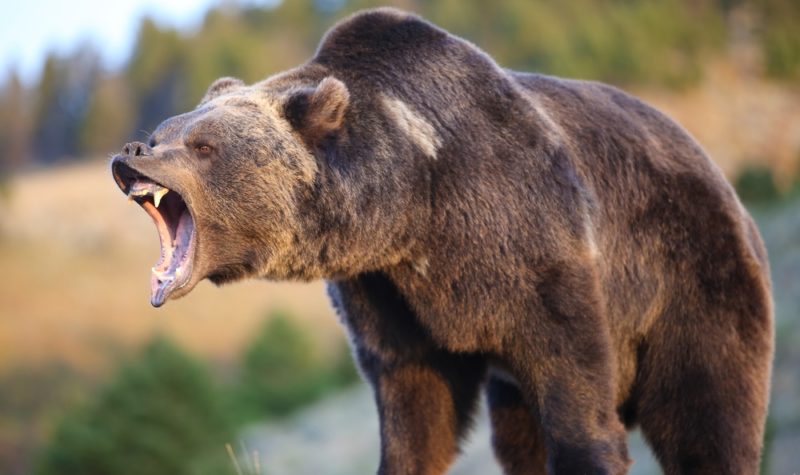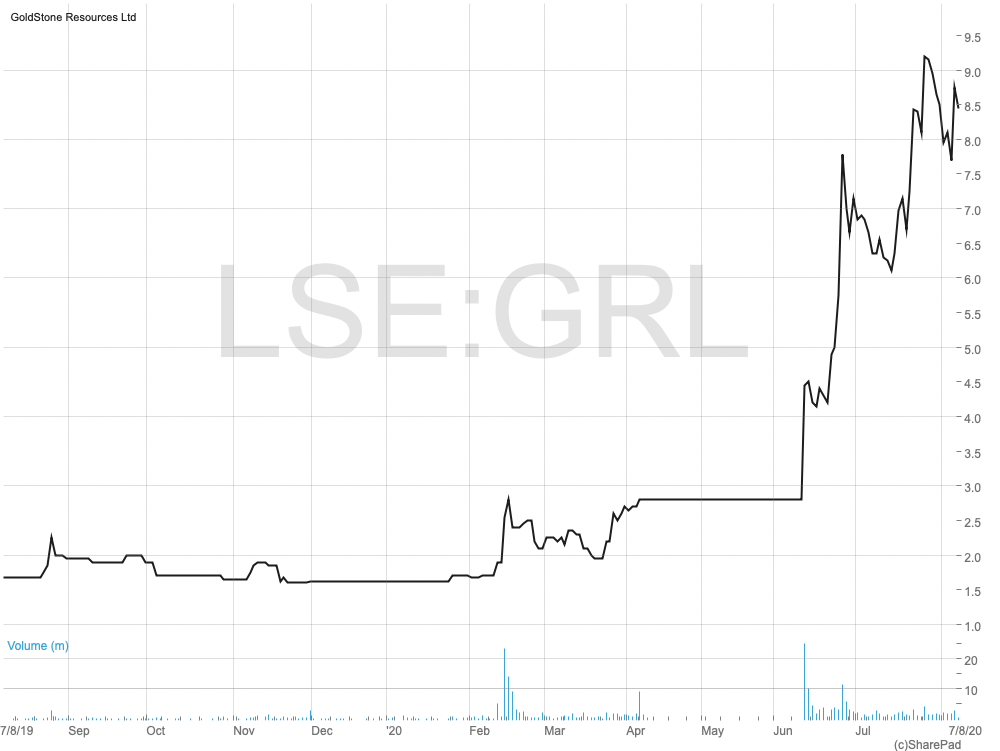Goldstone Resources: the bear case

Veteran mining analyst John Cornford explains why he’s not so optimistic as some on recent winner Goldstone Resources.
When I first wrote for Master Investor I said that, rather than recommend buys or sells there and then (not practicable with intermittent articles anyway) I hoped to tutor readers what to look for, so as to make up their own minds when to act. Here is an example of what to look for. Readers will make up their own minds whether to act.

Goldstone has soared in almost two months, as investors have piled into its attractive-looking near-term, but small, Akrokeri-Homase (AKHM) gold project in Ghana, only four miles away from, and on the same trend as, the prolific – 70Moz – Obuasi gold mine in Ghana. With gold roaring away, the rush was perhaps understandable.
The Homase open pit project, according to the Definitive Economic Plan (DEP) announced last year, together with tailings from previous mining, is estimated to produce 132,000 gold ounces over eight years. At a $1,300/oz gold price the DEP calculates an after-tax 10% NPV (net present value) of $19.5m, and a tremendous IRR (internal rate of return) of 143%, for a $6.5m capital cost. That means that after spending the $6.5m, the profit earned thereafter has an NPV of $26m. That compared with GRL’s market cap in March of only £7.6m.
However, the economics are not straightforward because, before GRL gets to benefit, some large costs, probably not accounted for in the project economics (as far as I know, because GRL has not released the necessary details of the DEP) have to be deducted, so that private investors, unless they know how to do the maths, will almost certainly not appreciate just how very large they will be.
The adjustments can be listed as follows.
First is a 10% ‘free carry’ to the Ghana government that is a condition of GRL’s mining lease. That means that while GRL still puts up the full $6.5m capital cost, it only gets back an NPV of $23.4m instead of $26m – which produces an approximate 10% dent in the IRR. This won’t have been allowed for in the DEP.
Second – and I’m not sure whether they have been allowed for – are two royalties on the gross value of gold produced. 5% is due to the Ghana government and 2% to Cherry Hill Mining Ltd who in March surrendered to GRL the 10% ownership it had in Homase.
7% on revenue may not sound much, but it comes out of the net profit (which if, for example, the operating margin is 50%, actually means 14% of the mine’s net operating profit).
In Homase’s case, at $1,300/oz gold the royalties amount to $6.1m which, allowing for Ghana’s 35% tax rate, would reduce net profit by $4m, which over eight years has a 10% NPV of $2.6m.
So, after the free carry and royalties, the $26m NPV of the profits earned once the capex has been spent, reduces to $20.8m – a 20% reduction, while the pre-capex NPV reduces from $19.5m to $14.3m – a 27% reduction.
I will adjust later for the current $1,850/oz gold price.
That, of course, is just one side of the NPV per share ‘value’ equation for shareholders which stems from AKHM. The other side, which again may not be obvious to investors but has a much bigger effect on their share value, is GRL’s corporate costs, and the number of GRL shares that will be in issue once the mine starts producing.
Up to March this year there were 252 million GRL shares in issue, so that the then $19.5m NPV per share looked reasonably (though not outstandingly) attractive at 7.7 cents (6.2p) per share when the shares were trading at 3p and GRL’s market value was £7.6m.
In March however the company raised $4.3m in short term loans “to get AKHM going by the end of this year.” So that when the shares were re-listed (after an administrative error had caused suspension) on June 11, that prospect caused an immediate share spurt to 4p, on record trading.
But in December there had been a £220,000 working capital deficit, not to mention outstanding directors’ fees. In addition, there was a £1.1m loan repayable in 2022, so the company was in any case desperately short of cash to meet an annual cash burn of around £500,000.
So no wonder the terms of the $3.4m funding were onerous (but obviously not noticed by investors). $1.3m was in the form of bonds carrying a 14% interest rate repayable by June 2021, and up to $3m was made available in the form of a gold loan repayable via 2,000 gold ounces at $1,500/oz, again by mid 2021. (In other words, losing GRL the difference up to the current gold price – at present amounting to $700,000 – or an effective interest rate of over 20%.)
More serious was the issue of a large number of share warrants, whose exercise (at an average of only 2.5p) will almost double GRL’s shares, from 252million to 475million – reducing that ‘published’ unadjusted $19.5m NPV per share from 6.2p to 3.3p. On my own ‘adjusted’ basis at $1,300/oz, the $14.3m NPV would be worth only 3 cents or 2.4p per share.
On a slightly brighter side, at $1,850/oz, the additional profit on 132,000 gold ounces over eight years, compared with the DEP’s $1,300/oz gold price, would be $72.6 million before taxes and royalties. As described already, these and the free carry take 10%, 7%, and 35% of the gross profit, leaving only 45% for the mine, which therefore retains $32.7m, for which the 8-year 10% NPV is $22m, to be added to the $14.9m adjusted NPV I have calculated.
Therefore, assuming a gold price at $1,850, the AKHM project NPV would be $36.9m, or 7.7 cents (6.2p) per share once all warrants are exercised.
(GRL has said it will depend on the warrant conversions to raise the funds it obviously needs to survive until gold starts to flow through after the 2,000 oz to repay the gold loan. Full production was slated to be at a rate of about 2,000 oz per month, so that might be quick. But with the shares now more than double their exercise price, full warrant conversion can be taken as almost given.)
Given my oft repeated opinion (for excellent reasons) that shares never, ever, even approach a ‘NPV’ based share value, you can see why I think GRL shares look considerably overpriced at their current 8p, even though the full warrant conversions would raise £5.5m (worth only 1.1p per then total shares).
So these traps to value, and some uncertain near-term finances, may be why GRL has recently announced that it now plans to considerably reduce the initial AKHM project outlay to only $3.8m, by omitting the plant to produce gold bars, and instead trucking gold loaded carbon from the leach pads elsewhere for processing. That would generate considerably lower prices even though saving on costs, and GRL has not announced how this will impact the DEP. Until it does, it will be impossible to assess an exact value for the shares, but I am unlikely to change my opinion.
One more factor, probably also not appreciated, is that full conversion of the warrants would give full control of Goldstone to three key investors: Paracale Gold Limited (already with70m shares); BCM Investments Limited (already with 50m); and Asian Investment Management Services, who has advanced the gold loan and now has 120m warrants. The board has only a small holding, and so if problems arise, the controlling investors could take the company private.
There are, of course, mitigating factors. There is considerably more gold in GRL’s concession area, (a JORC compliant resource of 602,000 oz at 1.77g/t) and GRL hopes to carry out exploration to exploit it. But that is all in the future, and would not normally be given any credit by seasoned mining investors. As for a take-over, speculated by some as warranting a much higher share value, I don’t think so.
Comments (0)